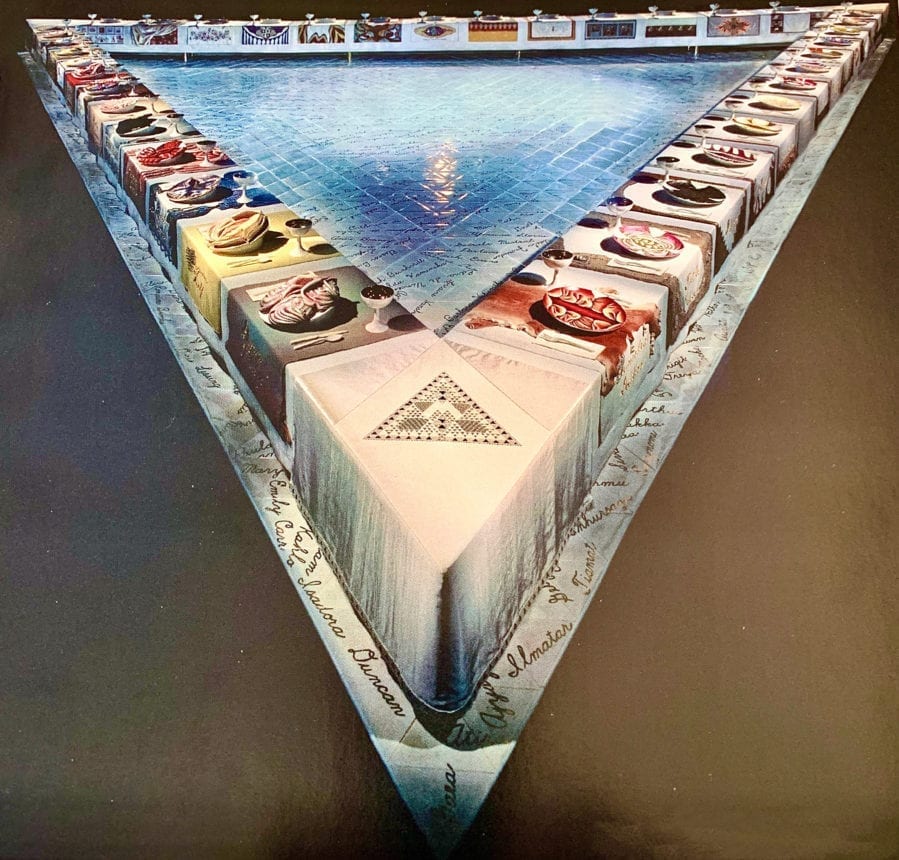Iconoclast Judy Chicago changed women’s history. In a way, she forged a path for it. Her grand 1975 masterwork The Dinner Party still speaks volumes. It moves us with women’s accomplishments in history. A trio of long tables unite. Clad in white tablecloths, they set a stage. These display thirteen artwork place settings. It’s a winners triangle of women. Each place tells a story. Embroidery and dishware share the details.
Rather listen than read? Click here:
I first discovered this powerful work in the Brooklyn Museum. It’s a life-changer. That’s because it reaches into archetypes. It moves the viewer with meticulous detail. Viewers delve deep into women’s history. It draws you in and grips you. The artwork won’t let you go. This piece spotlights the impact of 39 game changers. It’s as lasting as it is major. That moment you first see it sticks with you long after.
Judy Chicago Knew Otherwise
In 1960 Judy Chicago had an esteemed European History professor at UCLA. She asked him about notable women in history. But he couldn’t name an accomplished women in western civilization. This was at a time when Women’s Studies didn’t exist. In fact, influencers of that era chose not to acknowledge women. It was typical.
There was no history of women. No artists of merit among women. It was as if women had no lasting impact on the world. Judy Chicago knew otherwise. This is how feminists arise. They ascend from the rubble of disregard. Ignore an ember long enough and you’ll find yourself in a house on fire.
With The Dinner Party Judy Chicago fought this omission of women. She knew they belonged in the ranks of societal achievement. This ended her search for women in history. Her process itself made history and changed the stakes for women in art. It makes Judy Chicago a SheRo because she’s a hero.
The Wings of Women
The Dinner Party by Judy Chicago unites three long tables, these are the wings of women. Each table represents a historical period. So, the first wing spans prehistory to Classical Rome. That means it covers goddesses and historic personages. Examples include Sophia, the concept of divine knowledge, Sappho, Nefertiti, and Lucretia. There are some controversial elements here. For instance, Kali is most often called the Hindu goddess of destruction.
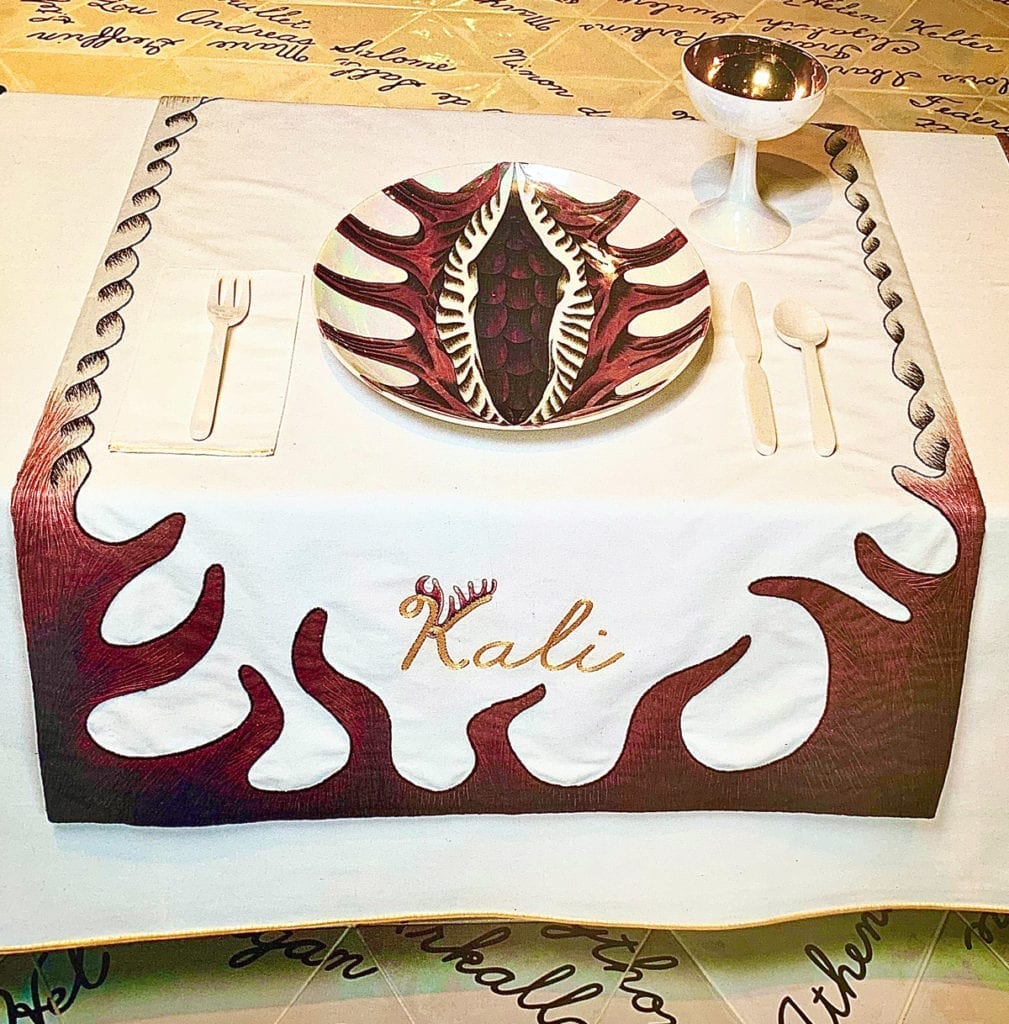
Women of power are often portrayed as harmful. Even today, power can frame women as fearsome. Instead, Chicago portrays Kali’s compelling beauty. She reframes Kali’s many arms. They aren’t so scary in this setting. Rather, they seek an embrace on the plate. Kali’s arms reach up the tablecloth to tickle rather than threaten. Her power remains undeniable. But she’s no longer the destroyer. So, Kali resonates the power of love in The Dinner Party by Judy Chicago.
Christianity to the Reformation
The Dinner Party second wing of women represents early Christianity. Here Chicago spotlights limitation. This refers to the rising social constraints on women. Family roles and community pressure forged restrictions on everyday life. But restraints on their bodies had the most profound impact. Chicago represents these encroaching rules with runner designs. Intricate imagery climbs the table runners. The images reach up to the place settings in this wing.
Tortula’s a prime example for such a setting. She was ahead of her time in gynecology. A renowned doctor, author, and professor, in fact. Tortula wrote the book Diseases of Women. It shared her vast background with pregnancy, menstruation, and birth practices. Her advice aided women for 700 years after her death in 1097. At Tortula’s funeral, the procession behind her casket ran two miles long. This beloved woman made a difference. She made history.
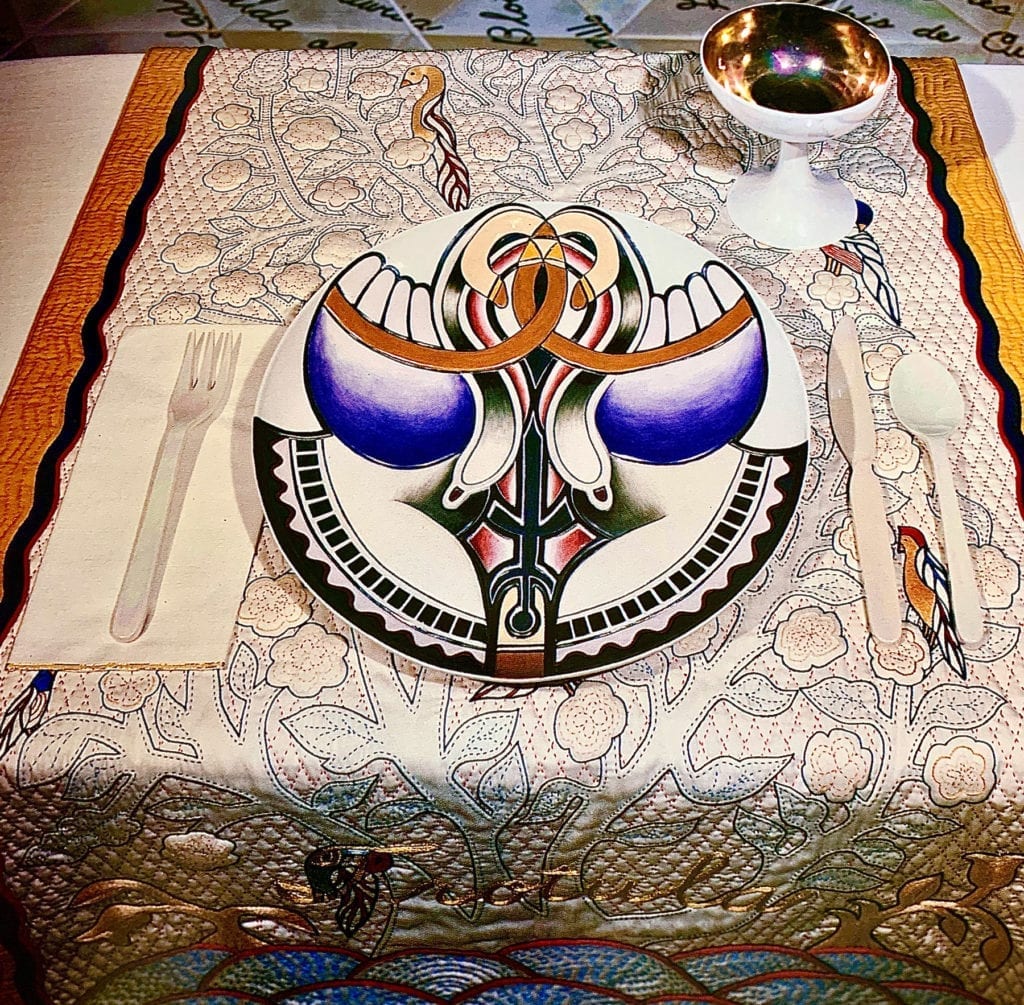
The plates style also shifts here. They’re more intense. Take the heady Tortula, pictured above. Lack of women’s history means you may not know her name. That’s the purpose of this artwork. It teaches Women’s History. This didn’t exist before. So, her work’s a meta accomplishment. It honors the unsung power of women. But this piece also places Chicago in the annals of women’s history. In fact, it makes her a leader.
The Dinner Party by Judy Chicago & Women’s Revolutions
The third wing covers history from the American to Women’s Revolutions. But fury writes this period’s front page story. Case in point, Mary Wollstonecraft. She wrote her apt treatise A Vindication of the Rights of Women in a rage. It was in response to a France trip during the Revolution. To her dismay, their rallying cry included fraternity. This word speaks only to men.
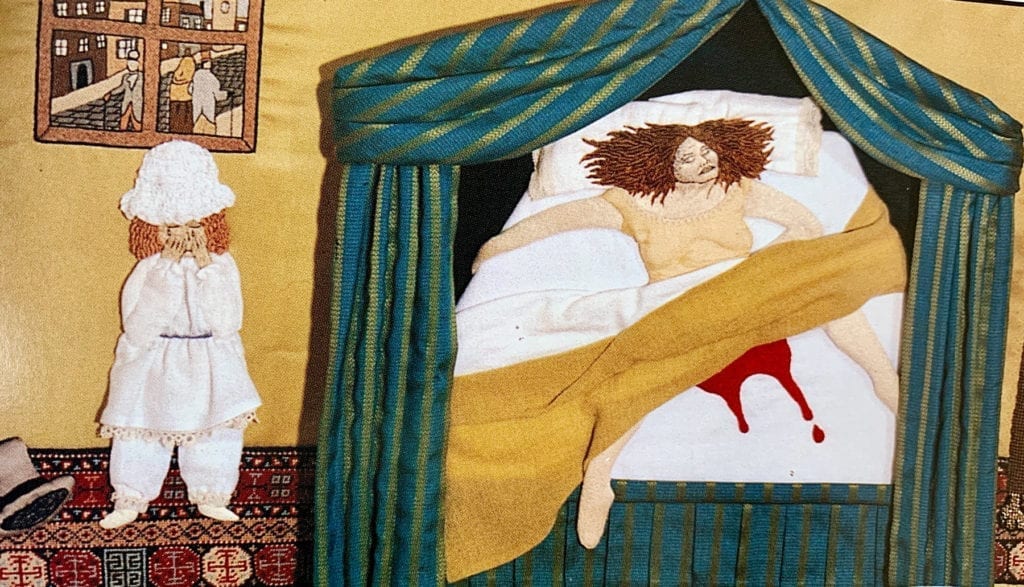
So, Wollstonecraft returned home to express that anger. She wrote the book that made her famous. In it she said women must be equal to men. Until then, human knowledge couldn’t progress. Wollstonecraft fought male tyranny until her death. On that day she proclaimed, “I have thrown down the gauntlet. It is time to restore women to dignity and make them part of the human species.” Her tragic death graces the back runner in Judy Chicago’s The Dinner Party. It’s the bloody scene, above. But the front, below shows the opposite. This revels in the deft stitches of Wollstonecraft’s day.
It’s a symbol for women of that time. Forced to hide rage and pain, they kept a perfect facade. On the front runner Wollstonecraft teaches young girls. She says they’re entitled to education. These were fighting words then. It’s not only her voice that speaks here. Method matters. Stitching also compels the viewer. Its clean, clear detail captivates. Uptight neuroses clutches cloth with these stitches. It’s fine needlework that contrasts with the plate’s abstract wildness. The flaming plate rages. These two sides of pain tell a complex story. Thanks to Wollstonecraft, it’s one time won’t forget
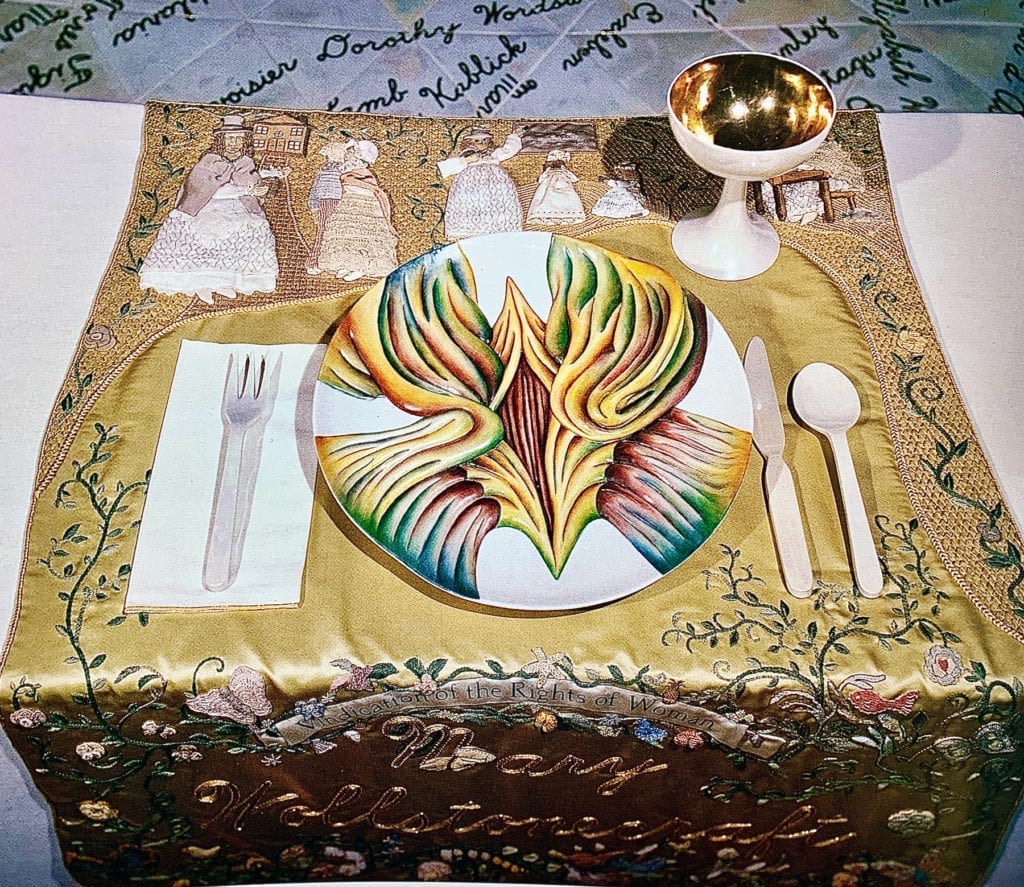
The Brooklyn Museum
The Dinner Party by Judy Chicago found a fitting location in The Brooklyn Museum. That’s because it’s the home of the Elizabeth Sackler Center for Feminist Art. Thanks to Judy Chicago, this floor also holds its flagship example. The piece shines as an icon to women’s history. That’s a lot like Chicago herself. She’s an iconic American artist.
ENJOYED THIS The Dinner Party by Judy Chicago ANALYSIS?
Check out these other essays on American Painters.
